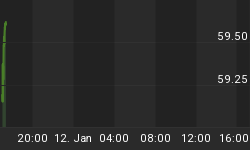This is a primer for understanding what a real bill is, its relationship to gold and consumer sovereignty, and how interventions interfere with the market's ability to effectively calibrate to the consumer's dynamically changing needs. More rigorous treatment of these concepts may be found in my paper, Real Bills: an Emergent Market Phenomenon, and in Antal Fekete's lecture series, Monetary Economics 101 & 102.
Real Bills, Gold, and Consumer Sovereignty
Let's consider a retailer and his supplier. A real bill is an instrument drawn by the supplier ("drawer") and accepted by the retailer ("drawee") for goods delivered. At some point within 91 days, when the bill matures, the retailer agrees to pay the supplier in gold the face value on the bill. The real bill is known as a "clearing instrument" because it allows time for the merchandise to "clear the shelves" of the retailer. The consumer's gold coin clears the shelves and the retailer uses that gold coin to extinguish his bill from the supplier. The retailer does not have to draw on his savings to pay the supplier and the supplier must wait for the consumer's gold coin to clear before receiving payment.
The consumer gets to dictate his needs to the retailer. In turn, the retailer may dictate to the supplier, and so on. Bills may thus be exchanged all the way up the production chain. The most liquid bill is the one drawn on the retailer from his supplier because it is the bill closest to the consumer. The retailer must cater to the needs of the consumer by being sensitive to what the consumer needs and what the consumer is willing to pay. In turn, the retailer can dictate to his supplier who must also indirectly cater to the consumer. With his gold coin, the consumer is boss and everyone along the production chain must come into line.
When the gold coin is taken from the consumer and replaced by irredeemable bank notes, the consumer is stripped of his power and the banker becomes in charge. Now, producers must cater to the banker who issues credit based on his disinterested view of what the consumer needs. This is an intervention with the natural market relationship between the consumer, his retailer, and upstream producers and suppliers. The banker's role has shifted from one of clearing credit to one of issuing credit for goods in urgent demand.
We may think of merchandise in urgent demand as any goods that make it through the production cycle and get removed from the market within 91 days. Food, clothing, fuel, and some medicine would qualify but this "list" could also include luxury and recreational items, so long as they're moving "off the shelves" fast enough. The important thing to realize is that this list of urgent goods, or social circulating capital, is dynamically set by the market. It cannot be determined by bureaucratic decree.
Interventions with the Discount Rate
In our context, interventions may be viewed as state or bank attempts to interfere with or usurp a free market calculation or allocation process. In essence, disinterested bureaucrats replace interested buyers and sellers. Only the free market can effectively constitute the pool of urgent goods. This collection of goods is too fickle to be "derived" by eggheads and bureaucrats. When central banks intervene to set the discount rate, they sabotage a sensitive market process and they interfere with the producer's ability to serve the consumer's urgent needs.
It is important to recognize that lending and discounting are different. The discount rate is the inducement for a retailer to pay his bills to his producers early. The producer is not charging the retailer interest for "borrowing product" while the retailer is trying to sell it. This is a crucial difference because the discount rate is set inversely to the consumer's propensity to consume. The marginal shopkeeper sets the discount rate by performing arbitrage between the consumer market and the real bills market. That is, he decides either to restock his shelves or to discount real bills on more productive goods of other merchants.
In effect, the Fed's central planning committee, the FOMC, has replaced the marginal shopkeeper. This can destabilize the market for consumer goods in urgent demand. The effects can be manifest in various ways, including excessive volatility in inventories and misallocation of capital. The central planning committee misinterprets this as further evidence of the need for continued interference and a vicious cycle of ongoing interventions may spiral out of control. The fallacy of central planning has become entrenched.
Another aspect of the central bank intervention with the discount rate is that it facilitates what Antal Fekete refers to as "illicit interest arbitrage". That is, it allows the social circulating capital to be inappropriately tapped to finance long term speculation. However, the bond market should fund this type of activity. This would not be possible if financial and treasury bills were not allowed to deputize for real bills.
Summary
More abstractly then, we may picture real bills as clearing instruments that mature into gold coins. The delivery of the gold coins is assured because goods in urgent demand collateralize them. Only the market can delineate which goods are in urgent demand because only bills representing those goods will circulate. Bureaucrats interfere with this delicate arrangement at the expense of society.
References
Bill Koures, Real Bills: an Emergent Market Phenomenon, September 26, 2005.
Antal E. Fekete, Monetary Economics 101: The Real Bills Doctrine of Adam Smith, Lectures 1-13, July - October 2002.
Antal E. Fekete, Monetary Economics 102: Gold and Interest, Lectures 1-6, January 2003 - March 2004.
Ludwig von Mises, A Critique of Interventionism, Mises Institute, 1977.
Antal E. Fekete, Where Mises Went Wrong, September 16, 2005.















